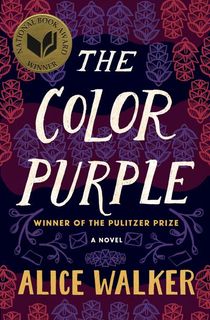In 2015, Early Bird Books partnered with Gloria Steinem for our "Reading the Revolution" series, a collection of essays in which Steinem reviews the titles which shaped her life and writing. Below, Steinem kicks off the series by reflecting on her childhood, growing up in a world that didn't see a need for a women's movement, and her discovery of French filmmaker Francois Truffaut.
In my twenties, I was in love with the movies of Francois Truffaut. Having been brought up with John Wayne and Doris Day, I fell upon this New Wave French filmmaker like water in the desert. Think of The 400 Blows, suffered by a boy with a stereotypical father, or Jules and Jim, about a mysterious woman with a will of her own.
I wouldn’t say this was feminist consciousness. There was still no such thing as a women’s movement in my life. I never even noticed that the woman at the heart of Jules and Jim was nowhere in the title, and came to a bad end.

However, I was so besotted with Truffaut that I persuaded a women’s magazine to assign me an article on the “trendy” London scene; all so I could go there and be on the set of Fahrenheit 451, Truffaut’s film based on a Ray Bradbury story. It was set in the future when a bland fascist regime made reading a crime, television into a spy and a brainwashing tool, and books into objects to be confiscated and destroyed. Indeed, the title is the temperature at which paper burns. However, an underground of resistors—which included the irresistible Julie Christie—responded by becoming books themselves. Each person memorized a classic, all of it, in order to pass it on to the future. In one supremely touching scene, disparate people are pacing in a field, each one softly repeating a chosen story.
This got to me because it was the way I felt about books as a child—almost any book. They could be grown-up novels I didn’t understand, the Hardy Boys and Nancy Drew, which I read at the same time, one book in a multi-volume history of the Civil War—it didn’t really matter. Anything with a story, I just kept reading from beginning to end, with or without snatches of sleep. (This I could do because we were living in a house trailer and I wasn’t going to school much—but that’s another story.) Some books were old friends that I re-read every year—they nonsensically included Louisa May Alcott, Tolstoy, and Gone with the Wind at the same time—and others were like those by Viña Delmar that my mother had placed upside down to indicate they weren’t for children. Actually, she was right for a different reason. Romance isn’t that interesting to an eight- or ten-year-old.

Alice Walker (top left), Zora Neale Hurston (bottom left), and Gerda Lerner (right).
Photo Credit: Getty Images and Wikimedia CommonsBut not until Fahrenheit 451 did I finally see people who were as crazy as I was. And not until I was in my thirties did I see social justice movements here that were obsessed with discovering and printing or re-printing books by African American authors, women of many groups and times whose voices had been forgotten, love stories between women and between men, new novelists from Africa, young people who rescued poetry by performing it in jams and slams—and many more stories that belong to all of us. Writers like Alice Walker restored the persona and stories of Zora Neale Hurston, and historians like Gerda Lerner warned that we would be forever condemned to “reinventing the wheel” unless the female half of history was restored. “Survival is a form of resistance,” as Gerda wrote. She meant books as well as people.
I want to recommend books that have been life-giving to me and to people I meet as I travel around the country. Some never had the readership they deserved, others have been shown to be prescient by time, and still others are now getting lost in the cacophony of new and legacy media. All benefit from the mission of bringing lost books into awareness.
You might say these are the kind of books that—once we read them—we are not quite the same people as we were before.

The Color Purple
When I read this in manuscript, I knew it was life-changing—but I didn’t understand its depth and universality until I listened to readers on other continents.
Related: Gloria Steinem on The Color Purple

The Demon Lover
Published 25 years ago, updated several times, and now with a new introduction, it keeps growing deeper and more relevant every year.

Sex & World Peace
Published two years ago and under-read, this is a book that could and should transform everything from our families to our foreign policy.

The Handmaid’s Tale
Three decades ago, I read this as science fiction. Now, it has become a crystal ball.
Featured photo: Cover of Doing Sixty & Seventy by Gloria Steinem
.jpg?w=3840)

